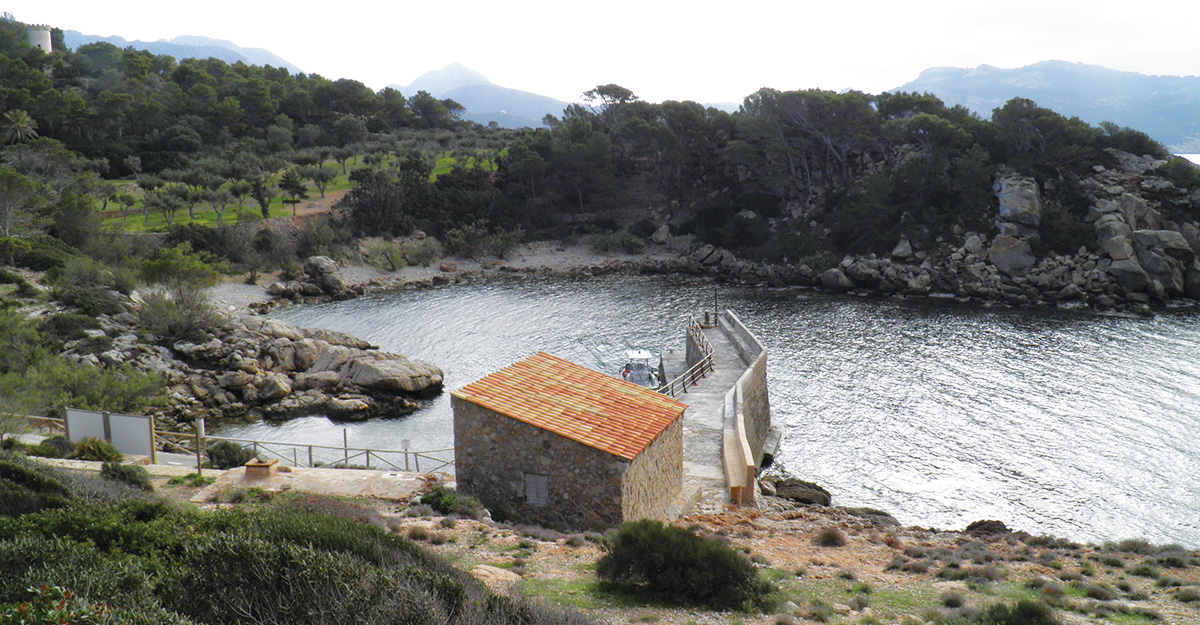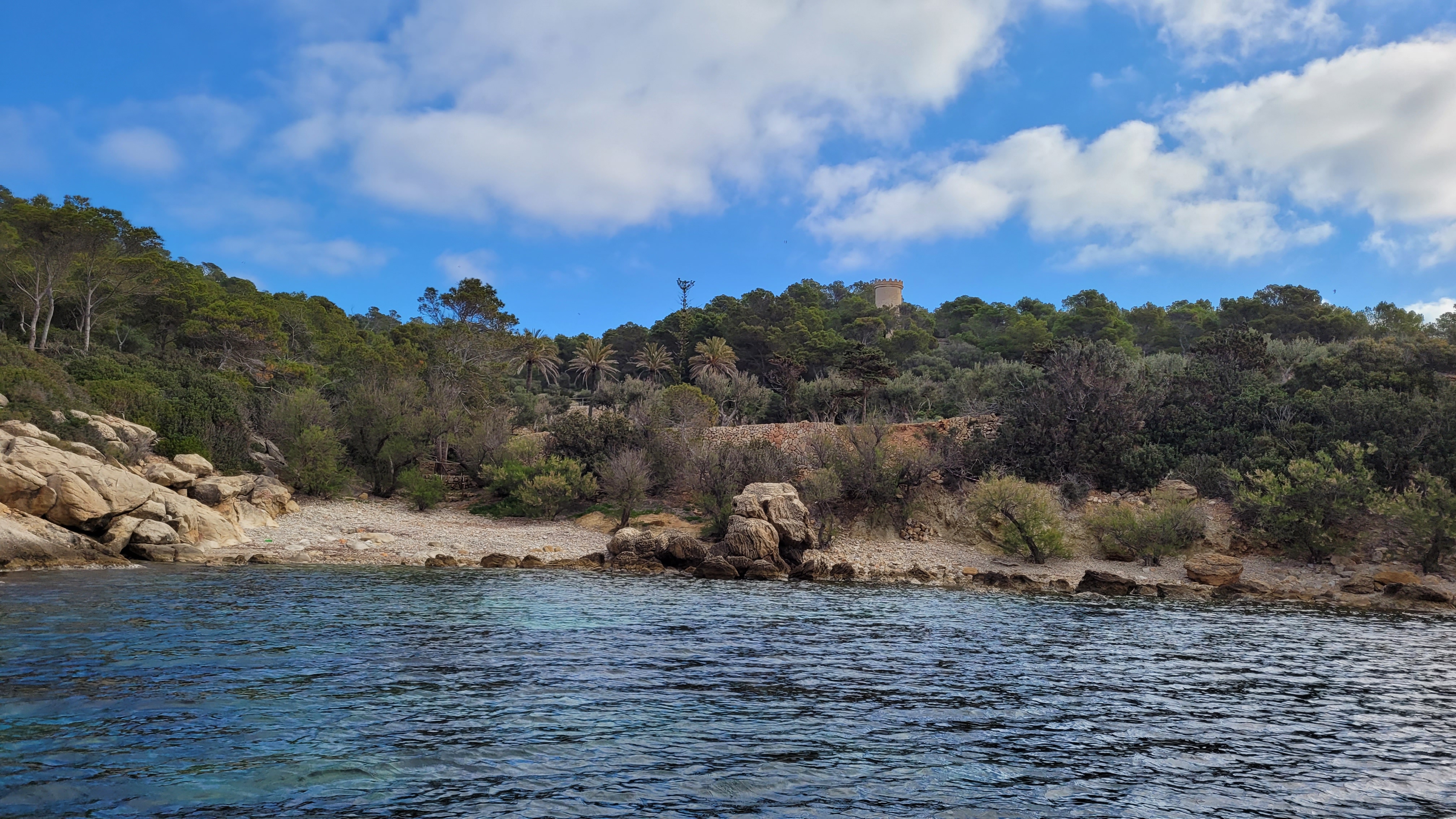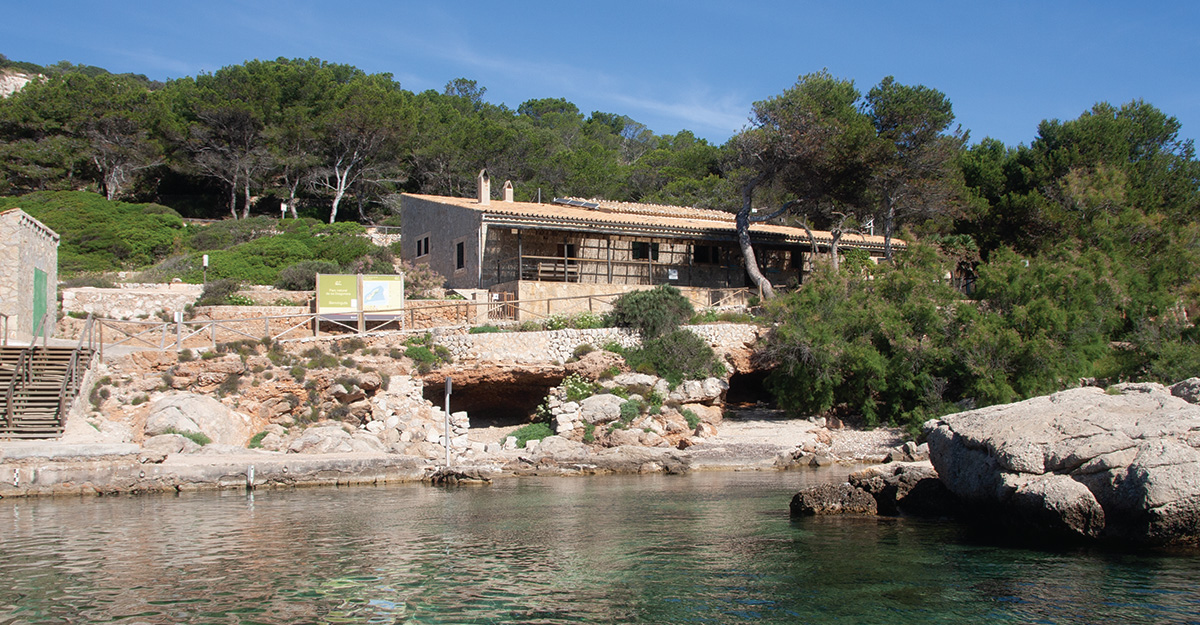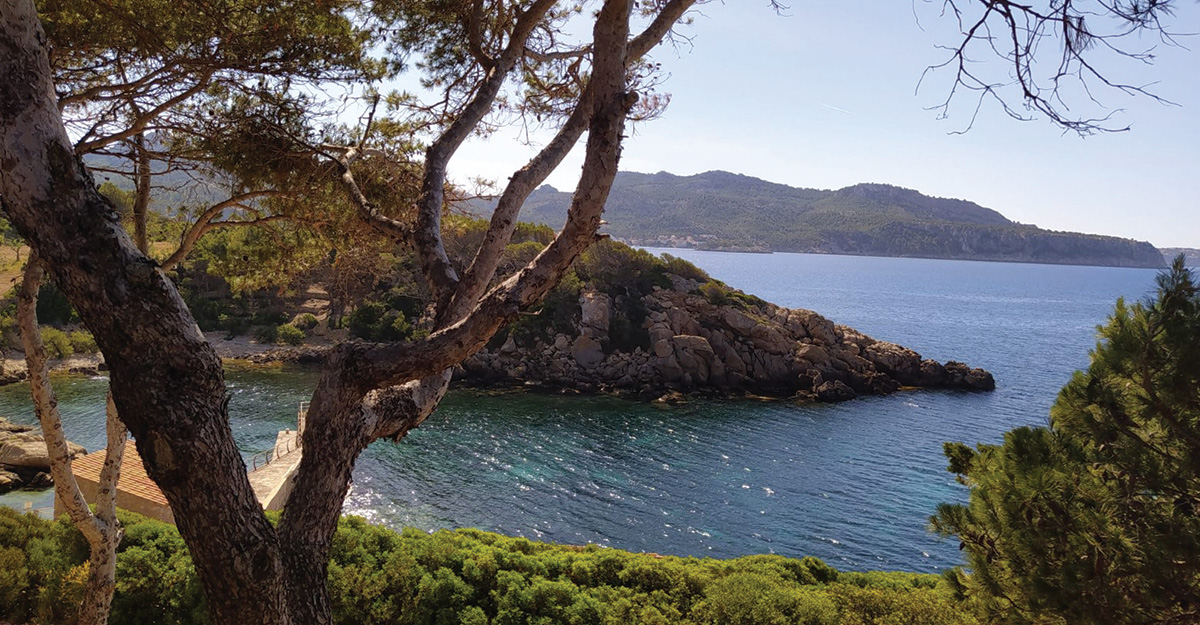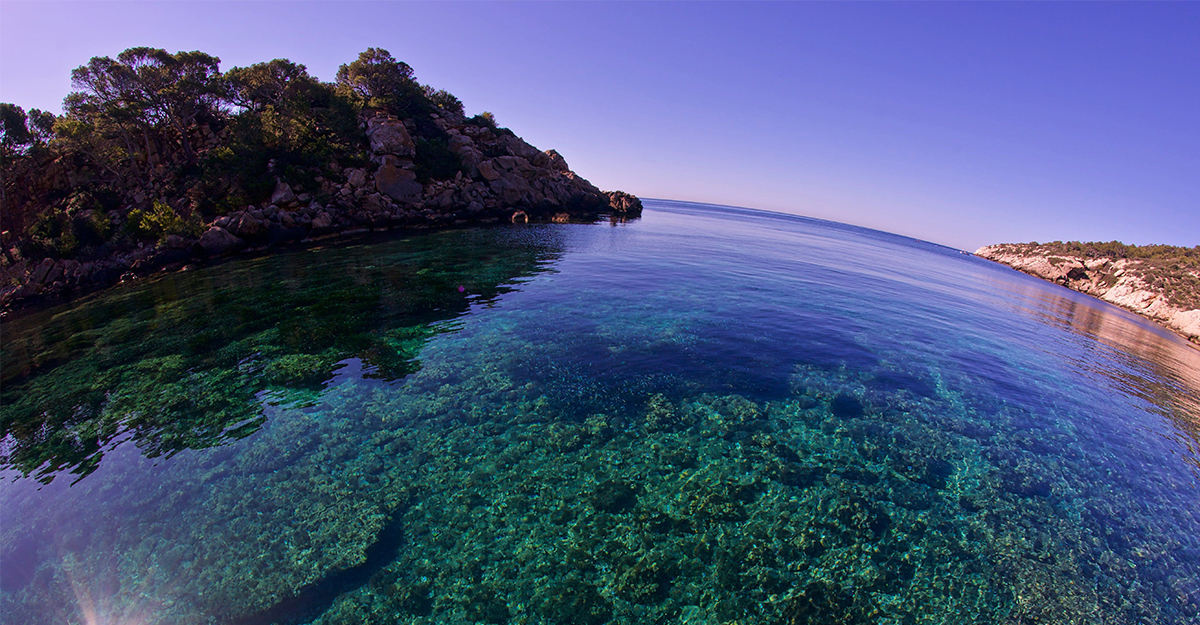Cala Lledó
The oldest remains of human occupation corresponding to the Talayotic period have been found at the Cala Lledó dock, the natural harbour protected from the thermal winds of the sea that provides access to sa Dragonera. It is a Roman necropolis, a burial mound with one hundred tombs that were covered at the beginning of the 20th century by the houses of the agricultural and livestock, forestry and fishing farm. These buildings currently make up the spaces of public use in the natural park.
Strolling through these areas attached to the dock that leads to the park, there are terraces where olive trees and cereal crops are grown, a small botanical garden with the flora species characteristic of sa Dragonera, and the park's interpretation centre. This facility delights with an exposition on the traditional uses for Chamaerops humilis and Roccella phycopsis, the passage of migrant birds and the most representative habitats of the island. In the same cove, you can enjoy a dip to cool off after the visit.
Cala Lladó's pier and houses
Cove's houses and that of the way of Llebeig's beacon, the store, the henhouse, the dovecot and the ruins of a construction in the elevated place, as well as a little house of Es Tancat, they were constructed in the middle of the XXth century, though part of the houses of the Lladó seems they have seized more ancient constructions.
Nowadays all these facilities are used by the park to attend to the public, works of management or as housing of the guards, volunteers and scientists who work there.

